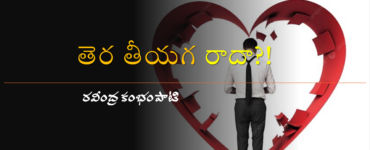“No one is quite so informal, so spontaneous, so fluent, so fresh, so breezy and so salty as Shouri Daniels in The Salt Doll.” Saul Bellow’s insightful comment, quoted on the cover of the novel, about the spontaneity of narration in The Salt Doll 1 draws attention to a very significant aspect of the story of a woman which may have been conventionally told with restraint and inhibition. What is unsaid, becomes more important than what is narrated and the reader has to then to sort out the meaning concealed between the lines. The Salt Doll tells its tale with an unusual ease unfolding the consciousness of a woman as much for herself as for the others in the novel and for the reader, with a robust self-confidence.
“I thought to myself, madness is when a person is herself, not what the world wants her to be.” (p. 9)
Having perceived such truth while young, Mira Cheriyan moved ahead living with commitment to herself as well as life rather than living merely upto “what the world wanted her to be”.
Shouri Daniels’ novel The Salt Doll leads one quite unpretentiously into the problematic of how the feminist theory might to confront the freshness of genuine personal experience. The novel creates the personality of Mira Cheriyan with all its real contradictions of a contemporary woman seeking to realize her own self in a traditional society. The sensitive self-consciousness required in the effort to define and steer one’s action calls for the presence of a witness within one’s own self. But it is equally essential to have the capacity to identify with “action” fully for a meaningful existence. Meera commits herself to life quite naturally and becomes the “salt-doll” which dissolves in the sea and loses identity. She calls this the feminine way of “experiencing” life. And at the same time, not only is she her own silent witness, she is also a commentator and self-aware critic. “Years later, I realized that all this has a deeper impact. In my flight from Eden, I travelled on a freedom road that was a one-way street; it took me years to realize that freedom is freedom to even bite another’s dirty toenails. Recognition of nuances is interior. It is not the half-done but the half-suggested that is the source of the alchemy.” (p.18)
Whether as a “participant in action” which may involve a total dispersal of her own being, or a witnessing self, Mira’s self-cognition runs parallel with an intense involvement in action. She does not compromise “experience” for the sake of theoretical self-definition. “The one occasion I visited them when I was ten, they made me kneel down at a family prayer meeting and confess that I was a sinner. They made me cry by telling me I was a sinner. I confessed I was one, and cried because of their compelling me to confess. They thought I truly wept and repented; they declared I was born again, and kept me in cotton wool for a whole day and a half…I ran away after that to Kuttapuzha.” (p. 32)
Mira demonstrates the courage to run away at ten. She is a “woman-hero” who has the conviction to sustain the salt doll, which is the feminine in herself, without surrendering her sense of “being”. Her existence after all would have to be realized. And that happens through her alertness of a woman in existential terms – a woman in a specific social and a historical context; what is revealed in the novel is the consciousness of the female self in confrontation and struggle with the oppressive orientations. There is a parallel perspective demonstrated in Simone de Beauvoir’s existential probing into female existence. After the World Wars, when Simone de Beauvoir mused over what being a woman had actually meant to her, she had in fact undertaken a very serious business. When she insisted that her career had not been at all impeded by her sex, Sartre had observed: “All the same, you weren’t brought up in the same way as a boy: you should look into it more closely!”2 Her book The Second Sex was in fact an outcome of the application of Sarterian Existentialism to the subject of a woman. What that meant was that for the first time, “woman” was under the relatively clear lens of observation. Such an outlook was founded on the conviction that each individual seeks fulfilment as a complete and autonomous human being with freedom of choice and action. This implied that the consent to be oppressed into “inaction” or “action in bad faith” is really in itself a dishonest act. Simone de Beauvoir upheld that women are victims of male tyranny and that even by consenting to male notions of herself, woman commits a serious fault. The basic idea of what is feminine, it was apprehended, is a “construct” of education and culture grown over centuries.
Mira in The Salt Doll has her own “territorial imperatives” and any encroachment, she says, would make her a “wild cat”. But indeed, as a “salt doll”, she has to consciously avoid the sea at the cost of herself. “[‘]A doll made of salt goes to experience the sea; immersed, becomes the sea and cannot return to tell you anything. All true experience lies beyond words.’ ‘Isabel, don’t you feel that the doll made of salt is the way women experience things? And for that precise reason must at all cost avoid the sea,’”. (p. 59) Men, she distinguishes, do not have to face this danger as they live “sequentially” making one thing lead to another.
The deep-rooted myths about women, the “female” and the “feminine” have not allowed the woman to lead an authentically free life. The disadvantaged position of women gets to be actually perpetuated by the conventionally accepted male critical perspectives. It is only in the last few decades in history that the feminist scholars have been protesting about the apparently systematic neglect of women’s experience in the literary canon. What Shouri Daniels achieves in this novel is an articulation of the silence of the female world, which is undergoing a change so dramatically. Of late, even though feminist critics have been scrutinizing literary texts to locate woman-centered literature to evolve a strong feminist consciousness, it is strange that The Salt Doll has not received much critical attention. This novel most obviously suggests a departure from the erstwhile male perspectives entrenched in the reader’s consciousness.
Woman has generally been presented as a mother and protector, as an inspirer and cherisher, the primal force or then, as the suffering wife or even a charmer. No matter what, woman in literature as in life has been projected as an instrument secondary to man. Woman has been perpetually fixed within the prison of images of static perfection; the free scope of growth and self-realization could not be accorded to her, unless the accepted convenient stereotyping of woman’s roles were to be disturbed. The gradual collapse of the pre-set frame of existence for Mira is hinted at the very outset and then developed gradually in the novel. The acute sense of privacy experienced by Mira as a child in a series of episodes in the attic with Mathai accords the sense of freedom to her.
In the post-independence India, expanding educational opportunities, economic aspirations and the shadow of Western culture posited the urban Indian woman’s consciousness against the male-dominated, traditional society. The pattern of evolution of the images of woman, from a sheer romantic idealization to a realistic understanding of a woman’s identity is woven through the story. Mira knows that she is self-evolved. “I am self-evolved — shaped out of nothing, gendered by accident; growing like manacles around me an armour that laminates and holds, a chink-proof convoluted evolutionist who knows that only the self is responsible for the self.” (p.184) Such an articulation of feminine experience has to be undertaken by the critic as an exploration of an individual’s destiny in its bare, unbiased and real context. Social conditioning from within and other extrinsic constraints may build fetters around the female will, making it difficult for her to act authentically. Needless to say, a woman’s own unconscious is shaped by patriarchy. She is not used to regarding herself as a subject for artistic delineation. A large chunk of human experience has thus remained unexplored. A lot has remained unspoken, due to an acute cultural repression. Shouri Daniels gives voice to the unspoken and the so-called “insignificant” in The Salt Doll.
Apart from the content of the novel, even the form of the narration is specifically attuned to “female consciousness” in this novel. Talking about the scope and difference between a male and a female writer, it is seen how even the distinct female and male worlds of experience could determine the choice of literary form. A well-known writer of fiction in Hindi, Raji Seth, is a strong advocate of the critical cognition of the “separate category” to which a woman writer belongs if only by virtue of the fact that a woman writer, just as a male writer, is essentially related to his or her own specific context and quality of experience: “… they both stand within their own socio-cultural contexts, with their own specific centres of tensions and pressures, their identities having different levels of social acceptance… they operate with distinctly different double standards of morality and have indeed different sets of rights and duties… the consequence is that they acquire very different, socially determined personalities with different kinds of conflicts and fights.”3
Woman, in terms of a cultural construct, has really been an object rather than a subject. Clutched with patriarchal norms, woman has let herself be a text or an artifact to be used within the context of the male world. This is what effects her attitude towards her physicality too. Often the metaphor of a doll has been used in literature to describe the fate of a woman. Maggie Tulliver in The Mill On The Floss tortures herself because she cannot and does not want to become a doll; in Toni Morrison’s The Bluest Eye, Pecola tortures her own self because she cannot look like her doll; and Anne Sexton is her own dead doll. In keeping with this tradition, a very relevant creative rendering of this metaphor is located in The Salt Doll. Mira can be a salt doll but she can also be “quick silver”; she may touch everything and remain untouched herself. “‘I said, yes, I am on a mission in search of myself.’” (p.108)
Ironically, Mira’s search for herself has the capacity to contain and cognisize the traditional in herself as much as the futuristic feminist ideal: “I don’t know why, but deep inside I regret the loss of the sati ideal”.(p.115) In the Preface to The Golden Notebook, Doris Lessing says: “What women will say to other women, grumbling in their kitchens and complaining and gossiping or what they make clear in their masochism, is often the last thing they will say aloud, a man may overhear. Women are the cowards they are because they have been semi-slaves for so long. The number of women prepared to stand up for what they really think, feel, experience with a man they are in love with is still small… this attempt on my part assumed that that filter which is a woman’s way of looking at life has the same validity as the filter which is a man’s way”. The striking spontaneity and freshness of expression in Shouri Daniels’ The Salt Doll draws the attention of the reader into the folds of the consciousness of the contemporary urban Indian female-protagonist. It is not merely a discovery of a psychological filter to look at life afresh, but it is the very quality of consciousness that is different from the one encountered in the majority of literary texts. What one receives is the contact with a series of experiences of a world which is either overlooked, taken for granted and dismissed, or dealt with either polemically or in an exaggerated style. It is the coming alive of a woman in her own form and psyche. It is the actual birth of a woman, not as in Marilyn French’s much talked-about novel The Woman’s Room, where the self-conscious assertion of the identity of the woman seems to be in itself an obsession of the writer. The focus in French’s novel remains not as much on the specific identity of the woman, as on the desire to present its importance. It may be noted that the creative rendering of the theme of defining the female consciousness gets diluted when the writer’s voice becomes instructive or didactic.
It is difficult to pin down the writer’s “agenda” in The Salt Doll. This speaks for the freedom granted by the author to her female protagonist. “Ambivalence, the word explained Nanjundan; it explained Mira, Rahel, everyone.” (p.176) The endless possibilities of existence made available to an individual, and in this case a female individual, show the writer’s unbiased and non-restrictive stance. The response to life recorded by the author in The Salt Doll cannot be accommodated in any organized form. That is where the appeal of the novel lies, in the legitimacy it grants to the natural movement of a female consciousness, with all its complexity.
The ease with which Mira Cheriyan’s life is unfolded in Shouri Daniels’ novel is remarkable; it retains the complexity of the female protagonist’s double-bind predicament without offering any explanations. The author does not allow herself to slip into the role of a propagator fighting for the rights of the woman. What she effectively does is to perceive the reality of a woman’s existence from the inside, retaining and recording the scope of her independence as well as the extent of her captivity. This is achieved not from the outside, but through the witnessing self of Mira. “I am a spectator. I am also in the center. All things are on the circumference.” (p.186) Mira Cheriyan, the central character of the novel, appears as both an actor-participant as well as an observer in the novel. She steps out of the action as a witness, as it were, to perceive the movement of her life filtering through her female consciousness.
“I tell him a figure of salt must forever avoid the sea. Men can sail the seas in search of white whales; they can hang up their souls at the Cape of Good Hope and pick them up on the way back. Men live sequentially; thing leads to thing.
“Not for her. If she reaches the sea by instinct, as do newly hatched sea turtles she will become the sea. The rest is silence or children. […]
“Pour her in any vessel and she will take that shape; run her through any terrain and she takes on the odor and grit of her surroundings. […]
“She is an onion. Peel her if you wish to, peel by peel, and what do you think will be at the centre? […]
“She is a hole to be filled. Time and space and action belong to the triangle of space every man must carve for himself […] She is parabolic, repetitive, seasonal.” (p. 98-99)
The psychological subtlety with which the acute awareness of the female self is projected by the author without any political or sentimental fervour is what impresses the reader. The adequate distancing between the witness and the participant within the first person narrative is skillfully sustained. The woman-hero reaches out to everything while remaining in her private space. The moment there is an inward suggestion that her self may be getting distorted or displaced, she gets alerted and cautions her; she keeps her close to her native and known self: “Nanjundan wants to be the figure of salt. He wants to eat it, dissolve it on his tongue till he too is made of it. He wants to experience everything, even menstruation”.(p. 99) Mira’s perception and minute observations keep her awake enough to safeguard her self. Any encroachment or male aggression would thus be immediately understood and perhaps rebuffed before any distortion through victimization may actually take place.
At Nanjundan’s advances she goes on to say: “This distorts me. For I then get displaced. I leave the world of woman and become part male. But my time is my time. Not his. If not, I become a wild cat.”(p.99) The celebration of life that radiates in the story is, for a change, from within the centrality of female consciousness. The spontaneity and informality with which the protagonist defines herself does not in any way churn out a mere female protest and bitterness with male domination. In fact, what is interesting is that Nanjundan, the male, is made to feel an object in his relationship with Mira. He says: “‘I am not an object. I am a man without a centre. Feel me, feel me, I am a man of flesh and blood!’” (p.178)
The quiet and subtle style with which the male and female interactional pattern reverses is artistically organized and the fact that the male emerges as an object does not at all appear sensational or melodramatic. It is the richness and the strength of the woman-hero which gradually builds up in the story and is cleverly contrasted with the diminishing personality of Nanjundan: “Things that happen to Nanjundan don’t really happen to him. He is absent. He is not there. He goes through the motions of being used. Being rejected. Being everybody’s doormat.” (p.136) It is important to point out here that Mira is not shown as a virago; in fact, it is the strength of her femaleness, her womanhood that is accented, which is not to be defined as femininity. Unlike her mother-in-law, she is not the great provider, nor is she merely an idea or an object of all ancestor worship. She realizes that “Born too late in time, she can never be her, nor she me”. That comment in itself reflects on how distant the modern woman is from that world. Mira is capable of defining, realizing and suffering her own cross. The socially imposed fortification of herself has shed itself somewhere down the lanes of time.
The story’s final statement is “[t]o be born is to feel, and to feel is to know. To die is to lose feeling which banishes thought.” (p.191). This is the essence of Mira’s own being. However, the essence which Mira perceives cannot really be defined in terms of gender or sex, though it is true that her consciousness acquires this understanding through the medium of female experience. The very same understanding could very well be arrived at by a male psyche despite the gender difference. The relevant point, however, is that the involvement of the character in his or her action or experience has to be authentically established for the emergence of such an understanding of life.
The Salt Doll, then, is a creative delineation of a woman’s psyche oscillating between tradition and modernity and evolving into a new identity through an alert self-awareness.
Notes :
- Shouri Daniels, The Salt Doll, Bell Books, Vikas Publishing House, New Delhi, 1978.
- Quoted by Renee Winegarten, Simone de Beauvoir: A Critical Review, Berg Publishers Ltd., New York, 1988, p.83.
- Dr. Jawahar Singh, “Women Writers: Concept of Modernism”, Vartman Sahitya, Dec. 1988, p.51.









Add comment